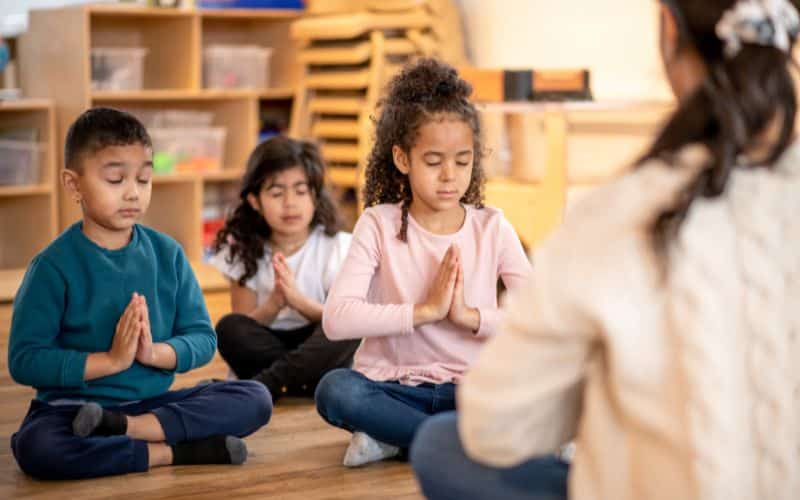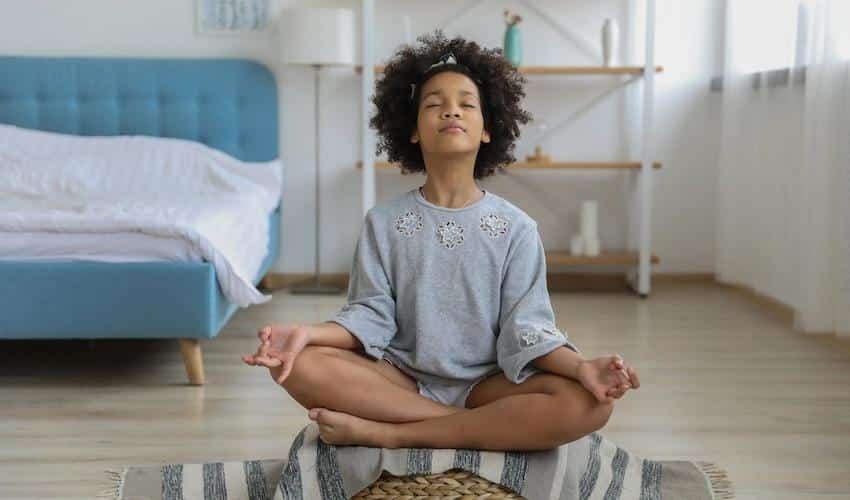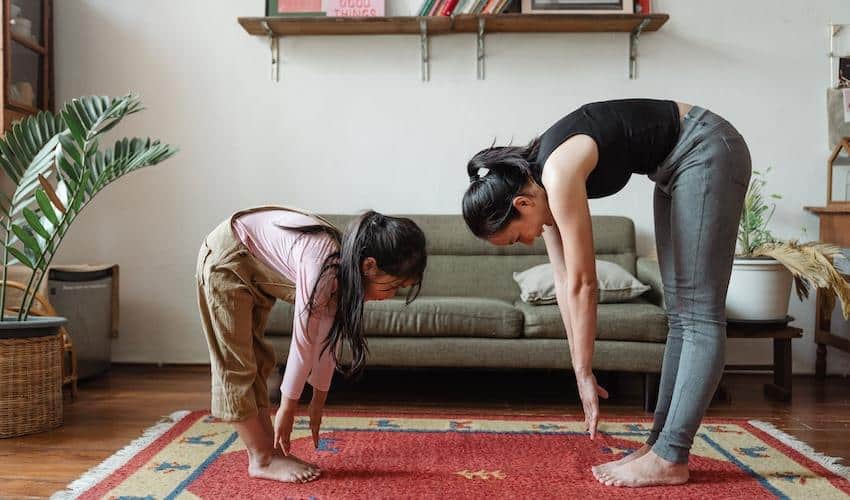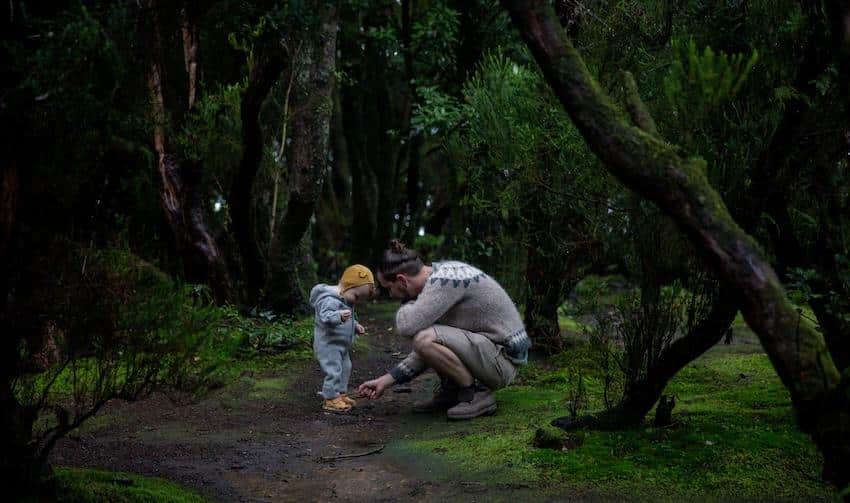In today’s fast-paced, digitally-driven world, it’s more essential than ever that children are supported in slowing down and honing their attention. Mindfulness and meditation are powerful tools for cultivating presence and well-being, and youngsters can profit from these practices just as adults can.
That being said, teaching children meditation requires a novel approach as in comparison with after we teach adults to meditate. On this comprehensive guide on how you can teach kids to meditate, we’ll share advantages, strategies, and child-appropriate considerations to make when teaching young ones. We’ll deal with mindfulness meditation.
May this guide support you in raising children who embody greater care and curiosity towards their experiences of themselves and the world at large.
The way to Explain Meditation to a Child
Mindfulness meditation is a practice of holding non-judgmental awareness towards what’s present, here and now. Nevertheless, this definition may fall flat upon the ears of kids. Children of various ages, developmental abilities, and maturity levels may resonate with different words, but some ways you would possibly describe meditation to a toddler include:
After we explain the concept of meditation to children, it ought to be made tangible and relatable. Due to this fact, it’s essential that we flesh out our explanation with examples or experience. For example, you would possibly invite your child to put on their back, place their hands on their belly, and see in the event that they can count three breaths because the belly rises and falls. Alternatively, you might set a timer for one minute and take heed to the birds until the timer rings. Explain that these are little moments of mindfulness meditation
It’s helpful to make meditation an enjoyable experience for youngsters. It shouldn’t be a chore or a task that we ‘must’ do. By honing in on a toddler’s innate curiosity and wonder, we will make meditation a technique of enlivening exploration.

The Advantages of Meditation for Children
Just as is the case for adults, studies are finding that there are lots of potential advantages of meditation for youngsters. A few of what we’re learning through research and case studies suggests that:
It’s essential to acknowledge that individual outcomes will vary. Every child could have a distinct experience with meditation. Moreover, results can take time and patience is very important. Consistency will help advantages to unfold, but it surely’s also essential to be flexible and aware of your child’s needs and experience. Mindfulness and meditation shouldn’t be viewed as a one-size-fits-all solution.
Moreover, mindfulness and meditation shouldn’t be considered a alternative for medical or psychological interventions when needed. In cases of significant mental health concerns or medical conditions, it is important to seek the advice of with a healthcare skilled for appropriate guidance and support tailored to the kid’s specific needs. Meditation shouldn’t delay the in search of of treatment when it is required.

At What Age Can You Teach a Child to Meditate?
Children of all ages, starting at toddlerhood, can learn to ‘meditate’ – in age and developmentally-appropriate ways, after all. For younger ages, ‘meditation’ might look more like ‘mindful exploration’. We will be flexible with how we’re defining meditation here.
For instance, younger children might do best with very short focused-attention practices (i.e. feeling their belly rise and fall for just just a few breaths) or bringing curious attention to their senses (i.e. observing nature, listening to calming music).
It’s also price noting that things like developmental needs and maturity could also be more essential than age when determining when and the way a toddler is able to meditate. Each child is exclusive and it’s essential to be attuned to their individual needs and readiness.
Introducing Meditation to Different Age Groups
For further guidance on how you can teach meditation to children based on age, consider this breakdown of age-appropriate ways to start. Keep in mind that your child may have something a bit different from what is usually recommended below. Use your intuition as a guide; you understand your child best.
Toddlers and Preschoolers
For the youngest children, meditation is usually more about mindful exploration than a proper seated practice. When your child is prepared, you’ll be able to teach them to ‘teddy bear breathe’ – resting on their back with a teddy bear on their belly and watching the bear move with each breath. You too can help them to explore their sensory experience, comparable to by noticing the colors they see or listening quietly to the sounds of nature.
School-Age Children
When children grow out of toddlerhood, you would possibly introduce them to a more formal style of meditation. This might be a seated mindful respiratory practice (starting with only one or two minutes) or a walking meditation (helping them to note the sensation of their feet on the bottom as they walk). You too can introduce them to mindful eating by sharing a slow snack together.
Teens
Because the child gets older and transitions into their teenage years, they could be ready for longer meditation practices or more mature mindfulness-related practices, comparable to self-compassion. Their readiness for longer, more mature practices might be (partly) influenced by how much (if any) meditation experience they have already got. In the event that they’ve never meditated before, it’s helpful to start out with the fundamentals, like mindful respiratory and body scans. Supporting them to develop into more mindful and compassionate towards their emotions can be a useful practice for teenagers.
When introducing mindfulness and meditation to children of any age, it’s essential to at all times show up along with your own embodiment of curiosity, care, and compassion. Modeling mindfulness is an often ignored aspect of teaching meditation to kids. The way you share mindfulness is just as (if no more) essential than what you share.

Helpful Suggestions for Teaching Meditation to Children
Consider Easy Respiratory Exercises:
The breath is a standard start line in meditation, and it’s an ideal place for youths to learn to anchor their attention. Mindful respiratory doesn’t should be long and drawn out. It could actually be so simple as counting out three to 5 breaths. Even only one minute of slow, deep respiratory can reduce stress in a toddler’s body.
Use Engaging Activities:
Mindfulness and meditation don’t should be formal and serious. With children, it’s an ideal idea to make these practices creative and interesting. Consider taking a mindful walk, exploring mindful movement, or doing a mindful craft. For instance, making a gratitude jar is a fun strategy to help your child increase their awareness of all of the blessings of their life.
Incorporate Mindfulness into Every day Routines:
You don’t need to depend on formal meditation moments to extend your child’s mindfulness. Bring mindfulness to on a regular basis activities, comparable to by encouraging them to listen to the food they eat, broaden their awareness while walking through nature, and note the day’s blessings before bed.
Create a Dedicated Meditation Space:
Meditation doesn’t have to occur in a selected place. Nevertheless, children may feel more motivated to practice meditation in the event that they have a dedicated and personalized space for it. Allow them to assist you in organising a comfortable corner in the home for quiet meditation time. Allow them to decide on their very own meditation cushion or chair and add another supportive items to the space.
Utilize Technology Correctly:
You don’t have to teach your kids to meditate all on your individual. There are numerous online resources and child-friendly meditation apps that may support you. Some are free and a few require payment or membership. Consider the next as potential resources for support:
Lead by Example:
As briefly noted earlier, your individual embodiment of mindfulness is crucial as a parent or caregiver. Children are known to mimic or mirror others, so that you’ll teach them plenty through your very way of being. Consider what mindful qualities you’d like your kids to develop after which consider how you’ll be able to deepen your individual embodiment of those qualities.
Be Patient and Flexible:
Move through this technique of teaching children meditation with patience, flexibility, and curiosity. Leave your expectations aside and stay open to how things unfold. If something isn’t working, try something different. Bear in mind that frustration, disinterest, and difficult emotions may arise. Are inclined to all of it with care and flexibility.

Conclusion
Teaching kids to practice mindfulness and meditation shouldn’t be a one-size-fits-all approach. It requires creativity, flexibility, openness, and care. Whether you’re a teacher, parent, or caregiver, this guide on how you can teach kids to meditate is a start line for sharing these supportive skills with our young ones.
Remember to be patient, to listen, and to steer along with your own embodiment of mindfulness. May these resources – and your teachings – help us to construct a more mindful world. May they assist us raise children with greater compassion, resilience, and presence – for the good thing about all.






